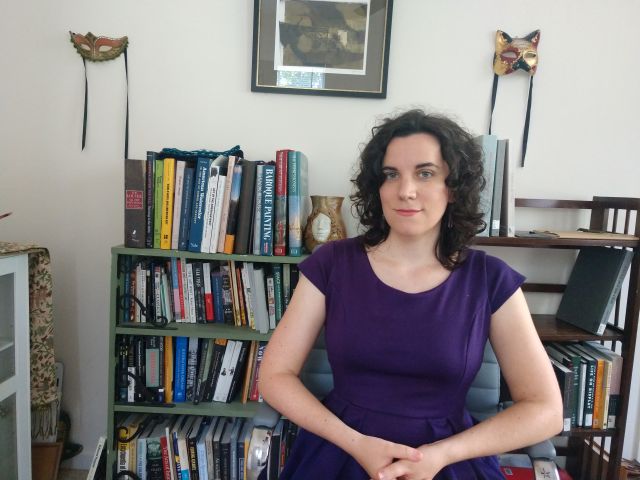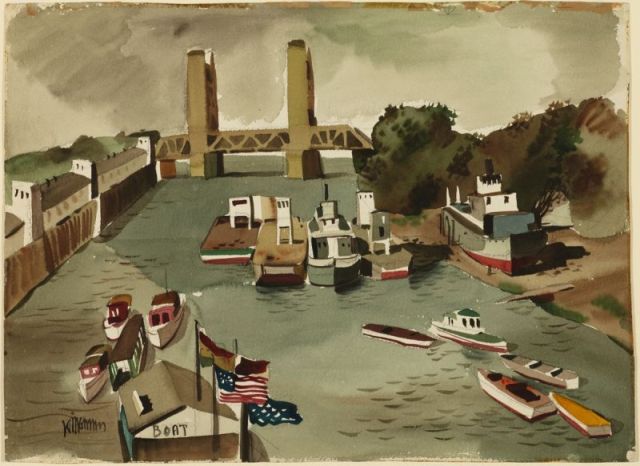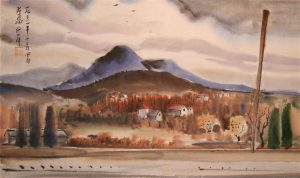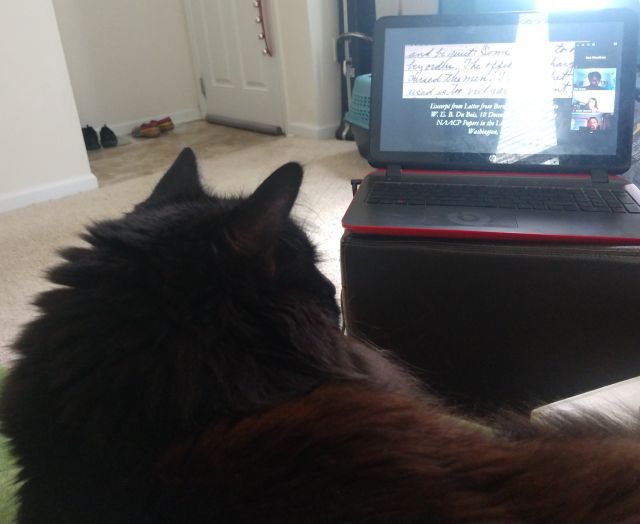Back in 2019, I wrote about attending my first conference with the Space Between Society. It took place in Brookings, South Dakota that year, and I had a great time. I got a lot of positive feedback on my research, and had the opportunity to connect and network with a variety of excellent scholars, many of whom I’ve stayed in touch with through social media. Overall, it was a welcoming experience, and I looked forward to attending the next one.
That happened online last week with “Race and the Space Between.” Originally slated to take place in 2020 in Charlottesville on the anniversary of the infamous 2017 Unite the Right rally, a blatant and violent display of white supremacy, it was postponed for a year due to the pandemic. It was then rescheduled to take place in Richmond, but after careful deliberation was ultimately moved online. While everyone agreed it would have been great to interact in person, safety overruled.
I talked about the history of FAP Exhibition #560, also known as Two Chinese American Artists. Featuring the work of Dong Kingman and Fay Chong, the Exhibition Section of the Federal Art Project assembled the show and sent it to the federal community art centers in New Mexico in the spring of 1941. In my paper I talked about how the exhibition text for the show suggested ongoing tensions within the FAP regarding the exhibiting of Asian American artists, on the one hand celebrating their work while also emphasizing their status as immigrants of Chinese heritage, distinguishing them from the so-called cultural mainstream.
If this project sounds familiar to any readers, that’s because it’s based on the paper I wrote for my Ethnic Modernism seminar in the spring of 2019. Yet this talk wasn’t simply a rehashing of that original essay. During a research trip to the Greenville Museum of Art earlier this year, also a former federal community art center, I discovered that it had also exhibited the works of Kingman and Chong in two separate Exhibition Section shows, numbered #450 and #451.

Unlike #560, which highlighted the status of Kingman and Chong as first and second-generation immigrants, and especially’s Chong’s use of eastern aesthetics and techniques in his watercolors, these shows deemphasized their Chinese heritage in favor of presenting them as thoroughly Americanized artists. So whereas the original paper focused on one exhibition, this conference presentation explored how three different shows in circulation around the same time period attempted to reconcile Kingman and Chong as Americans of Chinese heritage, with none of them fully succeeding in doing so. In essence, by presenting Kingman and Chong first and foremost as immigrants, Exhibition #560 suggested that their work was Chinese first, American second. Exhibitions #450 and #451, in turn, both deemphasized the artists’ Chinese heritage by highlighting their familiarity with American subject matter or Western painting styles.
Presenting a work that was originally meant to be shared in 2020 was an interesting experience. On the one hand, the direction of my research has changed a lot since I first wrote this piece, and it doesn’t really reflect the current trajectory of my work. Yet if I had shared it in 2020, I wouldn’t have known about the exhibitions at the Greenville Museum of Art, which have greatly enriched and complicated my understanding of Exhibition #560 and more broadly the Exhibition Section. More importantly, I still thought the project was relevant, especially in light of anti-Asian racism in the wake of the ongoing pandemic. After all, despite the FAP’s seeming inability to fully reconcile Kingman and Chong as Americans of Chinese descent, its stance was ultimately a celebratory one. It recognized the quality of their work, and Exhibition #560’s emphasis in particular on the positive benefits of immigration underscores the harmfulness of xenophobia, both for immigrants and for the countries who miss out on all they have to offer as a result of restrictions and systemized oppression.

The conference itself took place over five days, with sessions taking place in the late morning, early afternoon, and mid-afternoon. Some sessions happened concurrently; others were scheduled on their own. While most of the sessions I attended had the presenters giving their talks live, I chose to prerecord mine and upload it to the Space Between’s Dropbox folder, as I didn’t want to risk having my connection give out mid-talk. I also prefer prerecording my virtual conference talks because I find the experience of speaking to an audience I can’t see or hear unnerving. To preserve bandwidth, attendees at conferences are usually asked to turn off their cameras and sound. As the speaker, this means you can’t gauge how people are reacting to your talk. At least with prerecorded videos I already know I’m just talking to myself, so I’d rather do that than speak to an audience that’s present yet invisible.
As with the 2019 conference, Race in the Space Between was a great experience. I listened to a lot of provoking new research, learned about books and other resources that will aid my own work, and got the opportunity to network with both new and familiar people. The research of Dr. Adrienne Brown, the keynote speaker, was a revelation for me, and I definitely want to read more of her work on architectural forms, communities, and property ownership as perceptual experiences of race, from skyscrapers to redlined suburbs. The conference organizers clearly put a lot of time and effort into this experience to make it worthwhile, and it definitely showed. I give a lot of that credit to the graduate co-organizers at Virginia Commonwealth University, who both helped create the virtual platform and served as tech moderators for many of the sessions. They should all be proud of their hard work, as it made for an overall enjoyable experience.
All that said, I’m looking forward to being able to hopefully interact in person at next year’s conference, as it really is one of the more convivial academic events I’ve attended. At the same time, I also hope the Space Between will continue providing virtual attendance options, as it does help make these events more accessible to a wider variety of scholars. In the meantime, I’ll continue staying involved with the Space Between Society, not least by serving as the newly-elected Graduate Representative for its Advisory Board.
All in all, not a bad way to start the summer.




